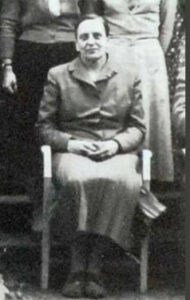Marion Amelia Spence Ross, born in Edinburgh on April 9, 1903, was a pioneering physicist and academic. After studying mathematics and natural philosophy at the University of Edinburgh, she excelled academically, receiving honors in 1925. Ross then trained as a teacher in Cambridge before returning to Edinburgh to become an assistant lecturer in the Department of Natural Philosophy.
Seeking to expand her knowledge, Ross collaborated with Professor William Lawrence Bragg at the University of Manchester, conducting research in crystallography. Her work on the crystal structure of beta-alumina led to the discovery of mobile sodium ions, making the crystal an efficient superconductor. This breakthrough laid the foundation for further investigations in the field.
Ross made significant contributions during World War Two, teaching mathematics and conducting research on underwater acoustics and hydrodynamics for the Admiralty. After the war, she established the Fluid Dynamics Unit at the University of Edinburgh and served as its first director. Ross also supervised several doctoral students and was recognized for her achievements when she was elected a Fellow of the Royal Society of Edinburgh in 1951.
Dr. Marion A. S. Ross, a dedicated reader emerita, left an indelible mark on the field of physics and academia. Her legacy continues through the Marion A. S. Ross Prize, awarded annually to an outstanding physics undergraduate student. In 2014, the University of Edinburgh honored her by naming a road in the King’s Buildings campus after her, further commemorating her remarkable contributions.
More information:
Wiki
University website



Leave a Reply